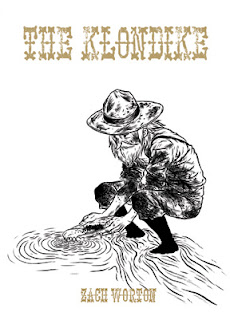Title: Mary Perkins, On Stage
Writer and artist: Leonard Starr
Published: 2006
Publisher: Classic Comics Press
Review by Jason Azzopardi
Over the years, my good “pals” at The Beguiling have bestowed upon me the distinct and, in my humble opinion, the rather passive-aggressive nickname, “The Hater”. This reputation, at least as far as I can tell, seems to stem from my choosing not to feel threatened by things that are different, by wholly embracing variety in my lifestyle, and by holding mediocre comics in contempt. But, I graciously accept this misnomer because I have a kind and forgiving nature. What the Beguilingers can’t seem to comprehend, however, is that for one to have such a capacity for “hating”, as it were, one must also have an equal capacity for loving.
As a comic book reader, you either love the daily “story” strip, admiring how its rhythms constantly reframes the story while advancing the narrative, or you find it dated and impenetrable. I am a lover of this particular form, and perhaps most of all, I love my Mary Perkins. She is the Bailey Quarters of comic books, and for those who know who Bailey Quarters is, you surely have some understanding of the depth of my feelings.
On Stage began its daily newspaper life in 1957, chronicling the trials and tribulations of a plucky young mid-western actress as she attempts to break into the New York stage scene and, eventually, motion pictures and television. Originally intended by writer/artist Leonard Starr as a soap opera for the newspaper’s female readership, the strip begins earnestly and competently enough with auditions and rejections aplenty for Mary Perkins, along with the accompanying backstage melodrama and relationship hardship. But all this conflict must have sparked true artistic inspiration in Mr. Starr, because On Stage almost immediately evolves from a well-crafted singular genre piece into something much richer.
As Mary’s career rises, and her relationship with her photojournalist boyfriend (and eventual husband), Pete Fletcher, deepens, so, too, does the jeopardy in the strip. Gangsters, wolves on the prowl and flimflam artists begin to appear alongside the unethical producers, agents and co-stars as antagonists. They are quickly followed by mysterious hermits, disfigured phantoms and international spies. Just go with it. It’s all a beautiful blast, simultaneously embracing and poking fun at romance and adventure genre hallmarks, but always with a wink and a smile from Starr’s lush line work and composition, pitch-perfect sense of story structure and pacing, and self-deprecating sense of humour.
Where Leonard Starr truly shines, however, is as a writer. At times, his insights into media and celebrity obsession are frighteningly prophetic, especially when taking into consideration that most of these insights occurred right around the beginnings of electronic and mass media, without the benefit of a half-century of hindsight to view the cultural impact.
But the true heart of On Stage lies in watching Mary develop as an individual. She does not structure her life around trapping a man for marriage, as most fictional female soap opera characters of the time do. With her intelligence and wit she is reliant upon and beholden to no one. It is only after she develops self-awareness and a sense of professional and personal confidence that Starr allows her to find someone to share her life with.
Mary and Pete may actually be the first “adult” couple to appear in comics. Their relationship is exciting, honest and flawed, and like the best literature, shockingly familiar at times. There, of course, is bliss and humour in their attempts to balance co-dependence with individuality, but also the daily irritations and pettiness that occasionally surface in any relationship. It is so lovely to watch them evolve from rich character archetypes into real people with distinct personalities and genuine emotional problems.
Mary Perkins, On Stage is entrancing. The indomitable Classic Comics Press is now roughly halfway through its complete run of the strip. If you are at all interested an extinct era of comics history, value diversity and intelligence in your reading material, or, unlike my pals at The Beguiling, have an open mind and, more importantly, an attention span, it is well worth taking a chance on the first volume of this charming series. You may just discover a forgotten masterpiece.
—
You can find Mary Perkins, On Stage in store at The Beguiling, or you can buy it online at beguiling.com.














